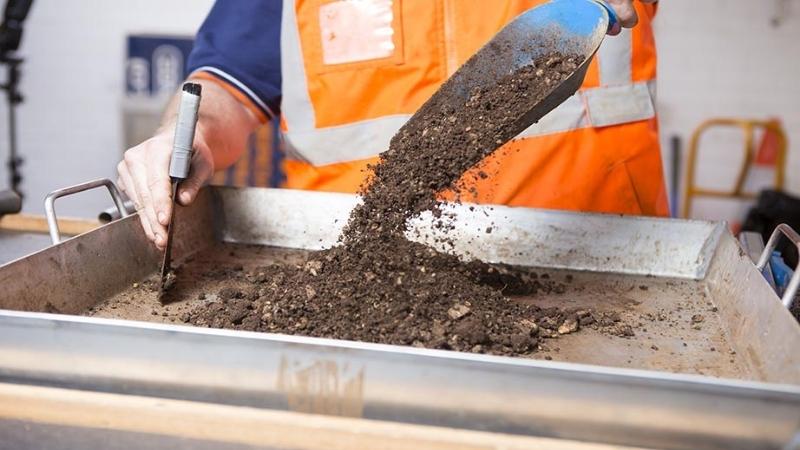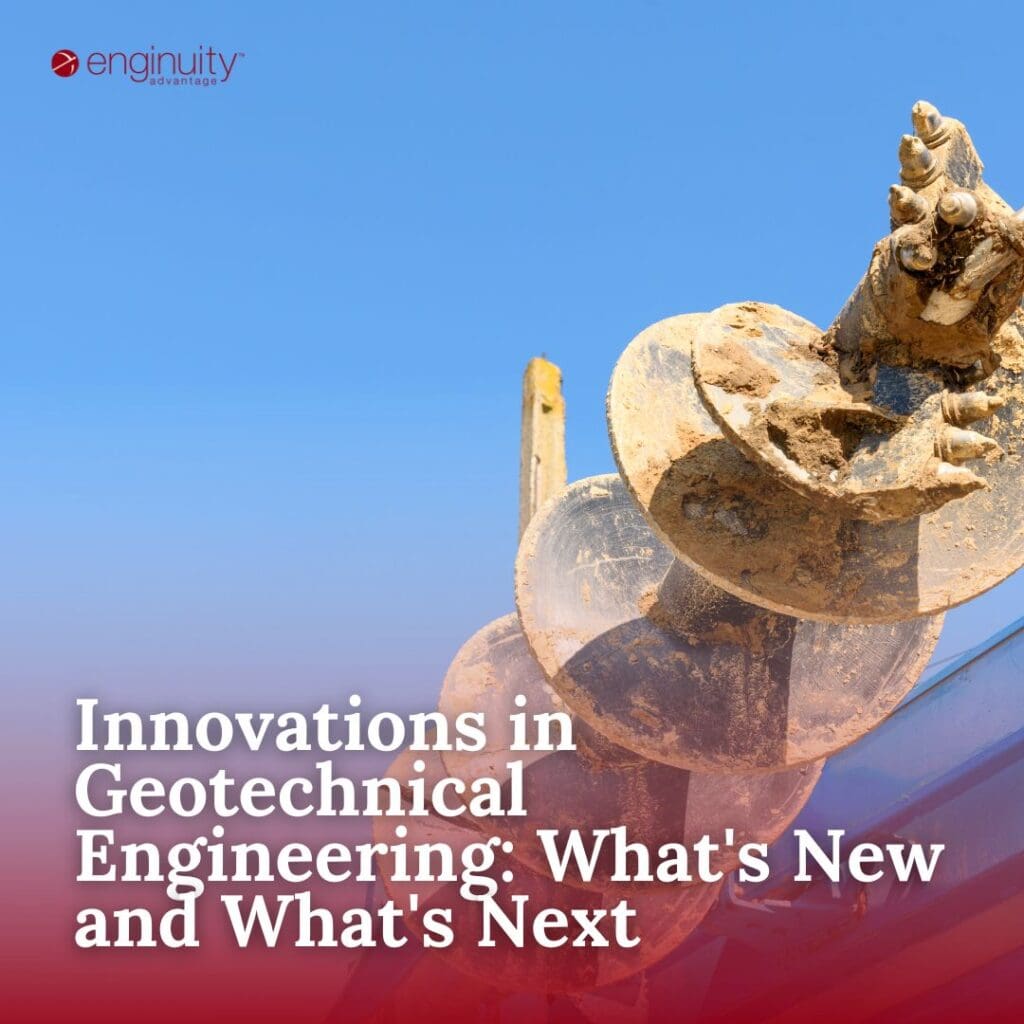Everything You Need to Understand About Geotechnical Engineering for Your Following Task
Wiki Article
Exploring the Interdisciplinary Nature of Geotechnical Design and Its Impact on Ground Improvement and Structure Design
The interdisciplinary nature of geotechnical engineering plays a vital role in shaping cutting-edge ground improvement methods and structure layout methods. By incorporating understandings from architectural, environmental, and geological techniques, geotechnical designers are outfitted to deal with complex soil actions and site-specific obstacles. This joint method not only boosts the efficiency of methods such as dirt stabilization and dynamic compaction but also makes certain that tasks adhere to sustainability concepts. What ramifications does this interdisciplinary harmony have for future advancements in the area, particularly in the context of arising building and construction modern technologies?Introduction of Geotechnical Design
Geotechnical engineering is a critical branch of civil design that concentrates on the habits of planet products and their interaction with structures. This technique incorporates the study of rock, groundwater, and dirt, intending to understand their residential or commercial properties and exactly how they affect the performance of civil design projects. Geotechnical engineers assess the mechanical and hydraulic behavior of these materials to ensure the security and security of frameworks such as buildings, bridges, and retaining wall surfaces.The extent of geotechnical engineering consists of website examinations, dirt sampling, and testing, in addition to evaluation of soil mechanics and rock technicians. Engineers make use of sophisticated methods to assess ground problems, identify prospective threats, and layout efficient ground renovation solutions. This may entail techniques such as soil stablizing, grouting, and making use of geosynthetics, which boost the stamina and longevity of the ground.
In addition, geotechnical design plays an important function in foundation design, establishing suitable structure kinds based upon soil attributes and filling problems. By integrating strenuous screening and analysis, geotechnical engineers contribute dramatically to the sustainability and durability of framework, making certain that structures can hold up against operational and environmental tensions with time.
Key Interdisciplinary Relationships

Furthermore, ecological design plays a crucial function in evaluating the impact of geotechnical activities on the bordering ecological community. This partnership is necessary for creating lasting methods that lessen ecological destruction during excavation or ground enhancement processes.
Furthermore, the combination of geotechnical engineering with geology boosts the understanding of subsurface problems, facilitating even more accurate website characterizations (all about geotechnical engineering). This partnership help in threat evaluation, especially in areas susceptible to landslides or seismic task, therefore informing risk mitigation strategies
Finally, improvements in modern technology have brought about interdisciplinary cooperation with information scientific research and geoinformatics. These fields add to boosted modeling and analysis techniques, permitting more accurate predictions of soil habits under various conditions. Hence, the interconnectedness of these self-controls enriches geotechnical engineering, advertising innovation and efficiency in structure design and ground renovation.
Ground Enhancement Techniques
Ground improvement techniques are important techniques utilized to enhance the engineering buildings of soil, therefore raising its load-bearing capability and security. These techniques are especially important in areas where all-natural dirt problems are insufficient for sustaining architectural tons or where ecological elements may compromise dirt integrity.Commonalities enhancement approaches consist of soil compaction, which enhances thickness and minimizes void areas, and grouting, which involves injecting products into soil to load voids and bind particles together - geotechnical specialist. Various other methods include the installation of soil nails and anchors, which supply additional assistance, and using geosynthetics all about geotechnical engineering to enhance dirt structures. Deep blending methods, such as soil-cement columns, can also significantly boost the stamina and tightness of weak soils
Furthermore, dynamic compaction and vibro-replacement techniques are typically utilized to improve dirt buildings in situ. These techniques can alleviate issues associated with settlement and liquefaction, specifically in seismic areas. By employing a combination of these ingenious strategies, geotechnical designers can efficiently address site-specific difficulties, making certain that the foundation systems will certainly perform appropriately under prepared for loading conditions, therefore adding to general job success.
Structure Design Considerations
Reliable structure style considerations are crucial for the long life and stability of frameworks. A well-designed foundation has to effectively support the lots of the structure while suiting soil conditions, ecological variables, and prospective adjustments gradually. Key variables include dirt bearing capability, settlement features, and groundwater conditions.Comprehending the soil profile through geotechnical examinations is necessary, as it educates the selection of foundation type-- be it shallow, deep, or specialized methods such as pile foundations or mat structures. The awaited loads, consisting of live, dead, and environmental lots, have to be properly determined to make sure the structure can stand up to possible failure devices, such as gliding, reversing, or too much settlement.
Moreover, considerations for frost deepness, seismic task, and potential dirt liquefaction in seismic zones are critical. Additionally, drainage and dampness control must be incorporated right into the foundation style to alleviate issues associated with hydrostatic pressure and soil disintegration.
Cooperation amongst architects, engineers, and geotechnical professionals is important to develop an extensive foundation design that not just fulfills governing needs however also makes sure the long-lasting efficiency and safety of the framework. Eventually, complete preparation and innovative services are required to address the intricacies fundamental in structure layout.
Instance Researches and Ideal Practices

One noteworthy study entails the use of deep soil blending in a high-rise structure task in a seismic zone. This method significantly boosted the dirt's stamina and stability, permitting a more secure and much more reliable structure system (all about geotechnical engineering). The project highlighted the significance of choosing appropriate ground improvement techniques based upon site-specific conditions, including soil kind and loading requirements
An additional example is the application of vibrant compaction for boosting the bearing capacity of weak soils underneath a commercial center. This technique efficiently reduced settlement concerns and enhanced overall site performance, showing the performance of integrating traditional engineering exercise with modern technology.
Best practices originated from these instance studies highlight the necessity of detailed site examinations, cooperation amongst multidisciplinary groups, and the consolidation of advanced modeling tools. By adopting these lessons, geotechnical designers can maximize foundation designs and ground renovation strategies, inevitably leading to more secure and much more lasting building end results.
Verdict
In verdict, the interdisciplinary nature of geotechnical engineering significantly boosts ground renovation and structure style. By incorporating concepts from various design disciplines, tailored strategies are created to attend to particular difficulties associated with dirt properties and environmental effects. This collective technique not only ensures optimum foundation stability and security but additionally promotes lasting building and construction methods. Continued exploration of these interdisciplinary connections will additionally progress the area, bring about cutting-edge solutions that respond properly to progressing design needs.The scope of geotechnical design consists of site investigations, dirt tasting, and testing, as well as evaluation of soil mechanics and rock technicians. The connection in between geotechnical engineering and structural design is particularly essential, as the efficiency of structures is heavily affected by dirt habits and buildings.Typical ground enhancement methods include dirt compaction, which enhances density and lowers void areas, and grouting, which entails infusing materials right into soil to load voids and bind bits together. Other methods include the installation of soil nails and anchors, which give additional assistance, and the usage of geosynthetics to strengthen soil frameworks. A well-designed structure should sufficiently support the tons of the structure while accommodating soil conditions, environmental aspects, and potential changes over time.
Report this wiki page